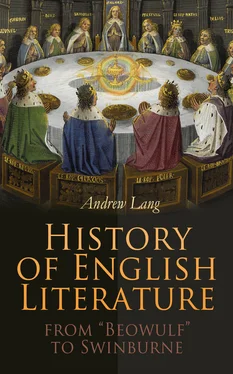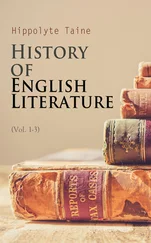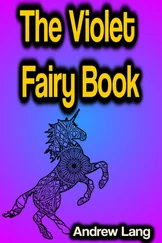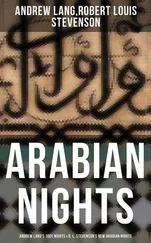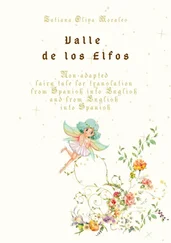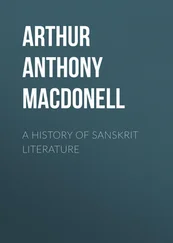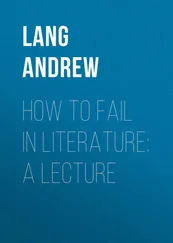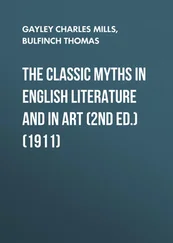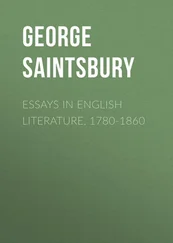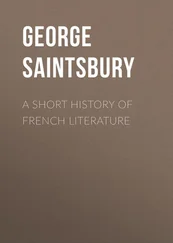The history of Alexander with all manner of romantic and fabulous additions, under the name "King Alisaundre," is in rhyming couplets of eight syllables to each line; the couplets are often irregular, as in Coleridge's "Christabel," and the story, like most of the English romances of this period, is borrowed through the French, from a late fabulous Greek work.
This kind of versified romance endured till Chaucer thought it tiresome, and parodied it, in "Sir Thopas". These rhyming English romances, in various forms of verse, were made for ladies and gentlemen who, already, were not able to read the more artistic and elaborate French romances for themselves; but were very well able to take pleasure in stories of true love and miraculous adventures. The romances set a fashion which was continued in the endless heroic novels in prose, French, and English, down to the end of the seventeenth century. The Middle Ages had no taste for novels of ordinary life, about people of their own time. These, in England, do not begin to appear till the reign of Queen Elizabeth, and then nearly a century and a half passed before they became really popular.
If much has been said about these old romances it is because they have so powerfully impressed themselves on the fancy of all later English poets, from Shakespeare and Milton, who dreamed of an epic on Arthur, and delighted in the sonorous names of Arthur's knights, to Tennyson and William Morris.
The romances, composed of fancies from so many sources and times, Greek, Celtic, Roman, and French, and English, are like that Corinthian bronze composed of gold and silver, copper and lead, all molten together at the burning of Corinth. In this rich metal poets of later times have moulded figures in their own fashion.
1.Scott's edition of 1819 is the fourth, while other romances in verse are to be read in the volumes of learned societies. No doubt people bought the book for the interesting essays and notes of Sir Walter; few of them would look at the old romance itself.
CHAPTER VIII.
ALLITERATIVE ROMANCES AND POEMS.
Table of Contents
Though English poets, in the fourteenth century, had a full command of rhyme, and of many forms, simple or complicated, of rhyming verse, there began a return to the old Anglo-Saxon alliterative verse, sometimes combined with rhyme. Chaucer, later, makes his parson say,
I am a Southren man,
I can nat geste— rum, ram , ruf —by lettre; Ne, God wot, rym holde I but litel bettre.
The parson's Opinion is his own, not that of Chaucer, who certainly "liked rhyme," whether he liked alliterative rhythm or not.
Gawain and the Green Knight.
A famous and really amusing alliterative romance, with a rhymed close to each passage, is "Gawain and the Green Knight". This tale is found in a manuscript which also contains two devout poems, "Patience," and "Cleanness," with an elegy of remarkable merit, "The Pearl". All four poems are attributed by several critics to the same author, and some of the Scottish learned believe that author to have been a very prolific and accomplished Scot. A few words may be said on this question later, meanwhile "Gawain and the Green Knight" has the merit of being readable. Though Gawain is best known in modern times through Tennyson's "Idylls of the King," in the romance he was by no means the "false, fleeting, perjured" knight of the great Laureate. In the Welsh Triads and other early Welsh versions, he is one of the three "golden-mouthed heroes," one of the three most courteous. He was the eldest son of King Llew, Loth or Lot, a contemporary of Arthur, from whom he received Lothian. In Geoffrey of Monmouth, Gawain appears as Walwainus. The figure of Lancelot comes later, as we saw, into romance, and Lancelot and Gawain then become foes. When Tristram (or Tristan) was introduced into the circle of Arthur, later, the authors of the Tristan (under Henry II and Henry III) had, for some reason, a bitter spite against King Lot and all his family; and calumniated Gawain on every occasion. This vein of detraction pervades Malory's "Morte Arthur," where Tennyson, looking for a false fleeting knight, found the Gawain of the "Idylls".
In "Gawain and the Green Knight," Arthur's friend displays great courage, courtesy, tact, and chastity under severe temptations, while, if he falls for a moment short of heroic virtue, he redeems his character by frank confession. The story is too good to be spoiled by a brief summary: grotesque as is the figure of the gigantic Green Knight, who suffers no inconvenience from the loss of his head, the trials of Gawain are most ingeniously invented, and he overcomes them like the Flower of Chivalry. He is rewarded by the magical "green lace" which may, it has been suggested, symbolize the Order of the Garter (about 1345), though the ribbon of the Garter is now dark blue.
In the manuscript volume containing "Gawain and the Green Knight," is the singular poem, "Pearl," which has been described as the "In Memoriam" of the fourteenth century. It is, indeed, an elegy by one who has lost a "Pearl," probably a Margaret, who dies before she is two years old. The poet bewails his loss, and speaks, in a vision, with his Pearl, concerning religion and the future life. The poem (edited, paraphrased, and annotated by Mr. Gollancz) was praised by Tennyson as "True pearl of our poetic prime".
"Pearl" is written in stanzas of twelve lines, with some resemblance to the form of the Italian sonnet (in fourteen lines), with which the author may have been familiar. The system of rhyming may be roughly illustrated thus,
Pearl that for princes' pleasure may
Be cleanly closed in gold so clear,
Out of the Orient dare I say,
Never I proved her precious peer;
So round, so rich, and in such array,
So small, so smooth the sides of her were,
Whenever I judged of jewels gay
Shapeliest still was the sight of her.
Alas, in an arbour I lost her here,
Through grass to ground she passed, I wot,
I dwine, forsaken of sweet love's cheer,
Of my privy Pearl without a spot.
The same rhymes persevere through the first eight lines, as in a sonnet, the rhyme of the second, fourth, sixth, and eighth lines continues in the ninth and eleventh; a new rhyme appears in the tenth and twelfth lines: and throughout there is much alliteration. In stanzas 1 to 5, "pearl withouten spot" comes always as a "refrain" at the close, and other refrains end each set of five or six stanzas, as in the old French ballade. The form is thus difficult and highly artificial, the making of the poem was, as Tennyson says, "the dull mechanic exercise" to deaden the pain of the singer.
The poet, fallen on the grassy grave of the lost child, lies entranced, but his spirit floats forth to a strange land of cliffs and woods, where the leaves shine as burnished silver, and birds of strange hues float and sing. He comes to a river crystal-clear, whose pearls glow like sapphire and emerald, but that river has no ford, and may not be crossed by living man. On the farther shore he sees a maiden clad in white and in pearls, fresh as a fleur-de-lis; she is the Blessed Damosel, the Lady Pearl. Her locks are golden, and her crown is of pearls and gold. She tells the dreamer that she is not lost: his Pearl is in a coffer; safely set in the garden of Paradise. She comforts him with the hope and comfort of Christ. Henceforward her discourse is religious: he strives to cross that River, and to reach the shining city of the Apocalypse; but he wakes on the grave of his child; and consoles himself with the promise of the Communion of the Saints. The machinery of the Dream, and the River, are borrowed (as all poets then borrowed), from the famous French "Roman de la Rose" (1240) with its allegorical characters. This fashion of poetry, always beginning with a dream, in which the dreamer has visionary adventures with allegorical personages, became a kind of literary epidemic, terribly tedious and conventional, as time went on.
Читать дальше
